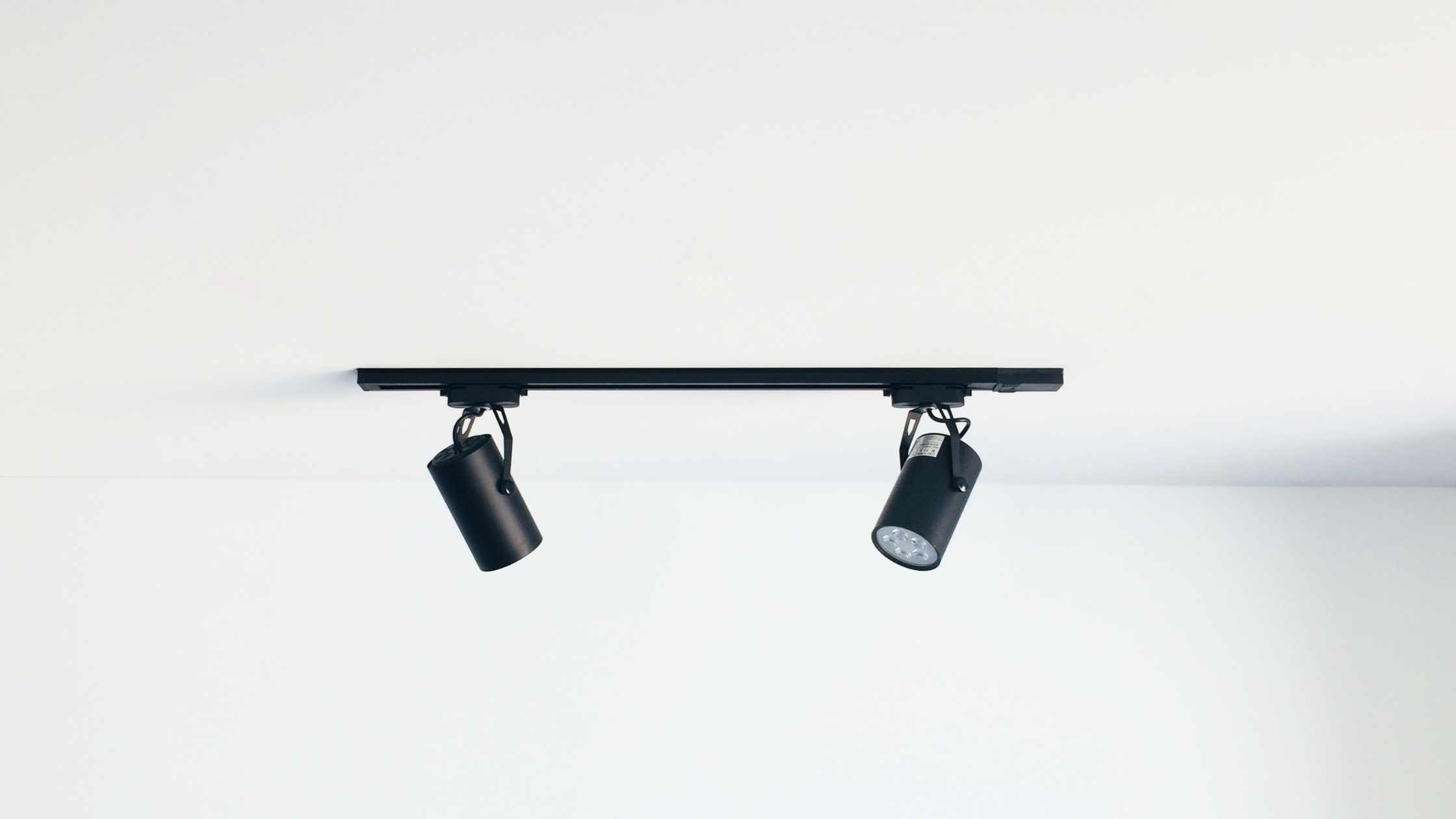Before knowing how to angle track lights head for a particular purpose, an important topic “beam angle” is required to be understood first.
A beam angle of track lights is simply how much light spreads after being emitted from its source at a particular distance.
The video below demonstrates beam angles of different lights.
(Watch from 0:44 – 2:11)
The lens what were talked about in the video are simply the lens which is placed in front of LED to scatter light from LED at a particular angle. Most track lights have a beam angle of 38 degrees which makes light to fall concentrated at a particular spot. The more beam angle the track lights head has the more distributed the lights will be emitted.
Having understood beam angle now lets find out at what angle should the head of track lights be placed.
FOR ILLUMINATING AN ARTWORK OR PICTURE
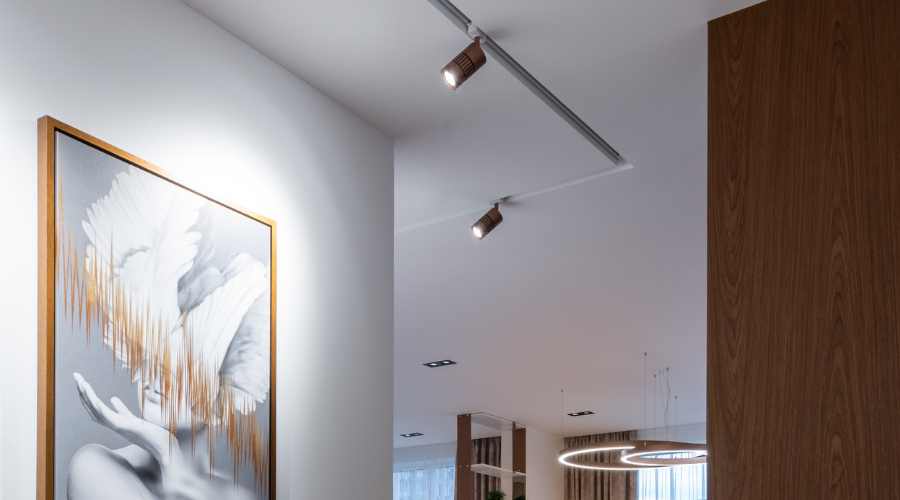

To highlight a particular thing in a room, track lights head must be angled such that more light falls on the upper parts of painting. For that head of track lights must be angled at 50 degrees to 65 degrees from the ceiling. This much angle will ensure that the picture is properly illuminated. For accurate measurement of angle found a very useful app on play store called clinometer.


Simply align your device with the track lights head and read the angle on the phone. The app is very useful and i myself use it very often.
For General illumination
Track lights head with a beam angle of 50 degrees and above should be placed at 60 degrees from the ceiling. So that more area can be covered on the floor. Higher beam angle ensures that light gets scattered as much as possible. Therefore, for general illumination purposes, beam angle of 50 degrees and beyond are ideal.
How to angle track lights in kitchen ?


How much to bend track head in the kitchen depends over where light is intended to fall the most. For example, if light from track lights is required to fall specifically over working areas like sink or stove then track lights should be angled more towards the floor usually between 15 degrees to 20 degrees from the floor or with respect to ceiling “70 degrees to 75 degrees from the ceiling”.
See the image below for reference.
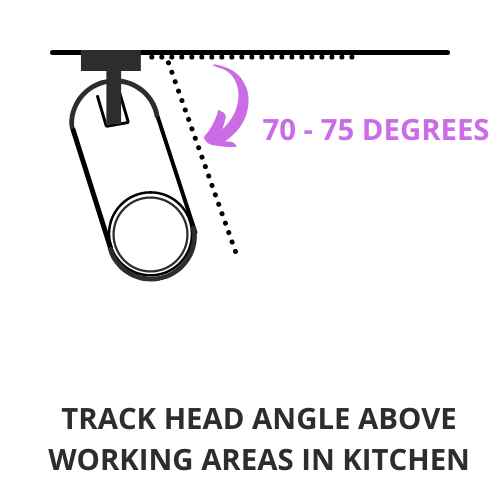

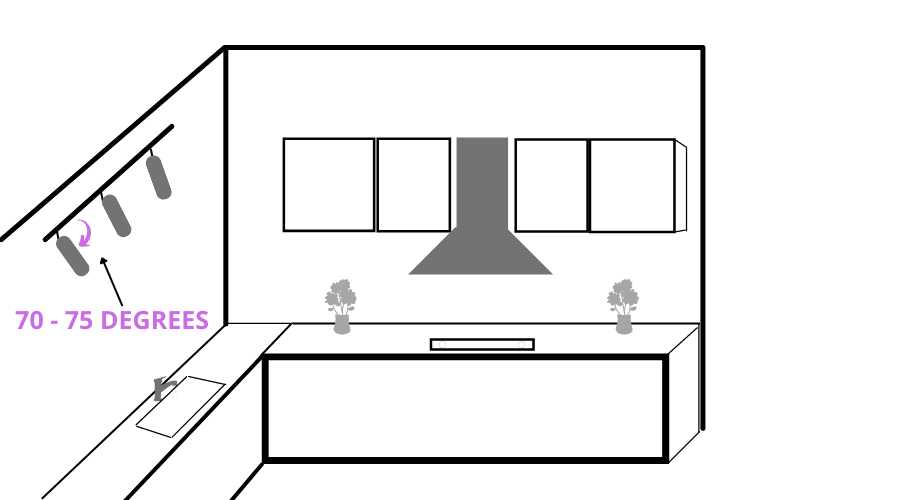

If there is no other light source in the kitchen then track lights must be placed close to the working areas such that the LED do not face towards the wall.
Now another important question is that how many track lights are required to illuminate a particular working area in the kitchen. Just for working areas in kitchen, one to two track lights would be sufficient to illuminate a particular working area be it a sink or stove. A single 8-watt track light can emit as much as 500 lumens. More detail about the lighting requirement in kitchen and how many track lights would be required can be found here.
Are track lights good for stairs?
Track lights over stairs are angled such that more light focuses at a particular spot.
For that track lights with beam angle 38 degrees or less are angled 90 degrees from the ceiling such that light falls directly over the stairs in concentrated from.
The major drawbacks are if track lights with large beam angle are above the stairs then while going upstairs, they can cause unwanted glares and if track lights with lesser beam angle are installed then the number of track heads required would be equal to the number of stairs which means too many track heads.
This is not practical because only one big light fixture placed at the ceiling at a specific location can solve all the lighting issues over stairs and also installing one light fixture is handy and economic than installing a number of rack heads.
How to angle track lights in basement ?
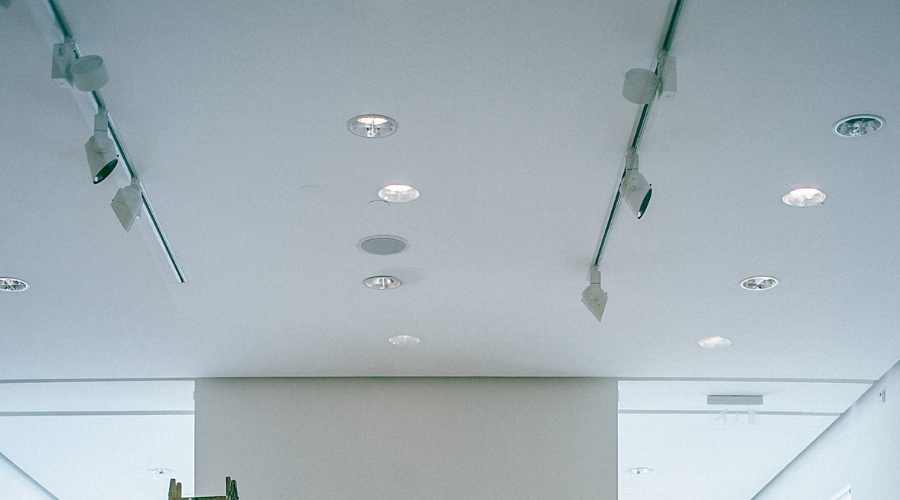

For general illumination in basement track lights whether placed in the centre of basement or at the corners of basement are angled at 45 degrees from the ceiling.
The principle behind angling track heads at 45 degrees is that light should illuminate maximum distance without undergoing much loss in intensity.
Angling track lights less than 45 degrees from the ceiling would send more light towards the ceiling and less towards the floor whereas angling light greater then 45 degrees from the ceiling would create bright spots of light on the floor and light distributes unevenly.
Therefore, track lights must be angled at 45 degrees to achieve an even distribution of light. To know how many tack lights are required in the basement simply calculate the lighting requirement of the basement.
If the basement is a visually demanding area where some work is done then lighting experts suggests that there should be 56 – 60 lumens per square feet of brightness in the basement. If 1 square feet requires 56 lumens then to calculate the total lighting requirement of the basement simply measure the length of the basement in feet and breadth of the basement in feet. Multiply them to get the total square feet area.
Multiply total square feet area with 56 to get the total lighting requirement of the basement. For example, if the basement is 8 feet in length and 9 feet in breadth it has a total square feet area of 8×9=72 lumens. Then multiply 72 with 56 to get the total lighting requirement of the basement i.e 4032 lumens(72× 56 = 4032).
A single 12-watt track light head can provide an illumination of 900 lumens which means 4 such track lights head would be required. A single 25-watt track light head can provide an illumination of 1920 lumens which means only 2 such track light s are required.
More information on which track lights are the brightest can be found here.
How to calculate how much beam angle track lights have ?
To calculate the beam angle of track lights let the light fall on a surface. Upon falling on the surface, the light will form a circle. Measure the diameter of the circle in feet and the distance of the light source from the surface. Then use these values in the formula below. or simply use this calculator.
α= 2{arctan × (Φ/2d)}
Where α = beam angle, arctan is an inverse function of tangent used for calculating angles, Φ (phi) is the diameter of the circle that light is forming over the surface and d is the distance of light source from the surface over which light is falling.
Normally the beam angle of track lights or any other LED lights are already printed in the description or details of products by the manufacturer.
Can beam angle of track lights be adjusted as per requirement?
The beam angle that track lights would have depends on the lens that is placed in front of LEDs. To adjust the beam angle simply change the lens that is placed in front of the LED.
Some manufacturers have designed their track lights that allow such replacement of lens while some manufacture design track lights with adjustable beam angle. Most track lights have only fixed beam angle. Therefore, before choosing track lights check whether track lights have adjustable beam or not.
Track lights with adjustable beam can serve in more than one location i.e from highlighting an artwork to illuminating an entire room if needed.
How to angle track lights in bedroom ?
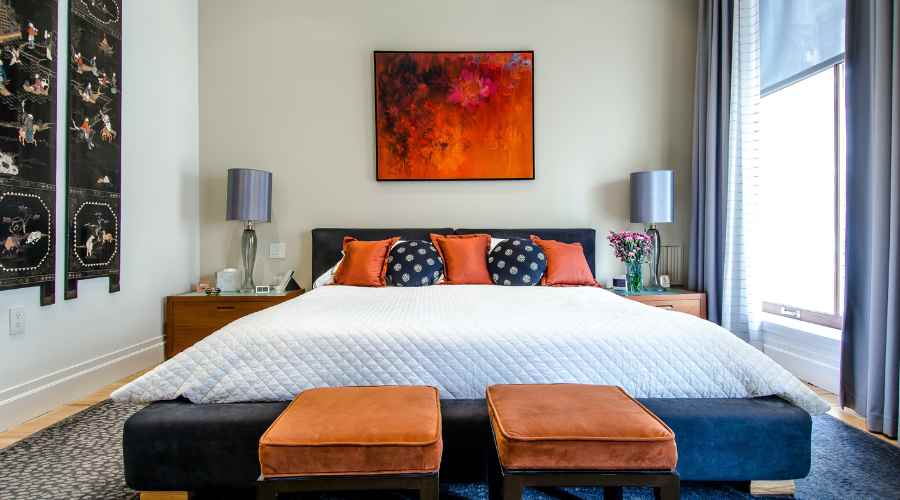

There is an important fact to keep in mind while angling track heads from the center of room and is that the`light should fall such that uneven spots of lights can be minimized.
In simple terms, track lights with a beam angle of 38 degrees or less must be angled at 45 degrees or less. Similarly, if the beam angle of track lights is greater than 50 degrees then they can be angled at 50 degrees or even above. Refer to this article to know how much is the lighting requirement of a bedroom per square feet.
